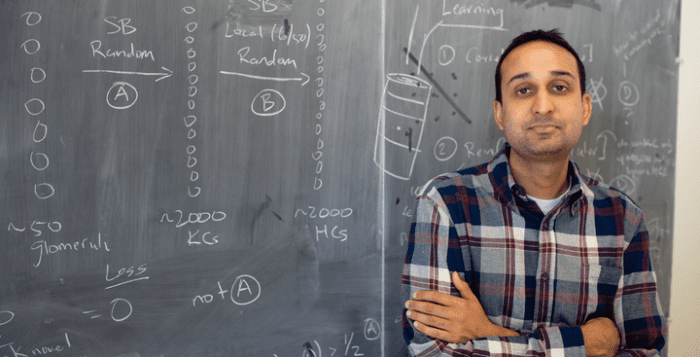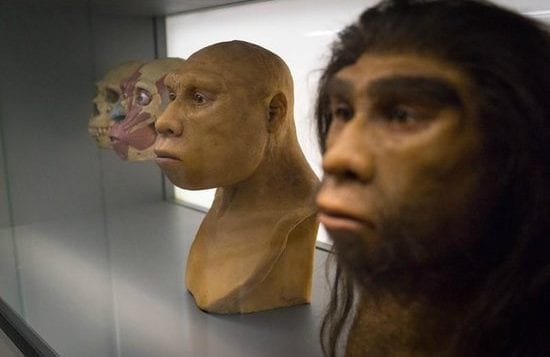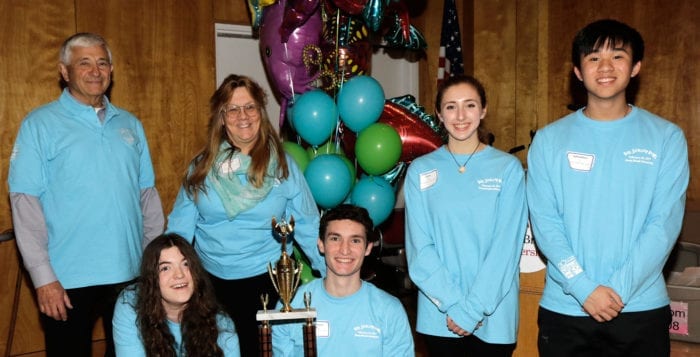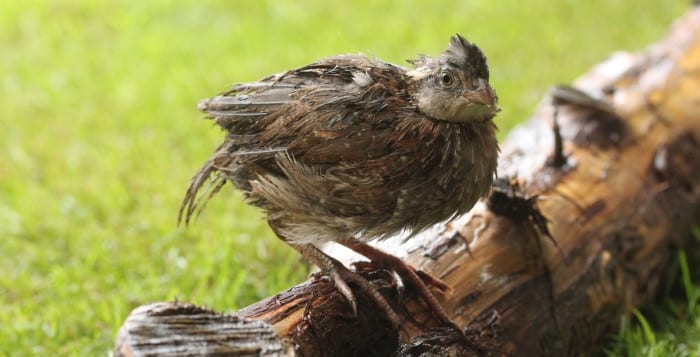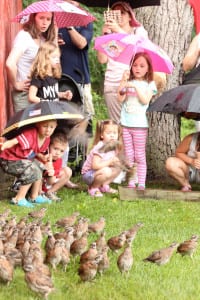By Daniel Dunaief
Plants have to solve challenges in their environment – without a brain or the kind of mobility mammals rely on to survive – through strategies and computations that keep them alive and allow them to reproduce.
Intrigued by plants and by the neurobiology that affect decisions or behavior in a range of other organisms, Associate Professor Saket Navlakha recently joined Cold Spring Harbor Laboratory to study the processes a range of organisms use.
“Biological systems have to solve problems to survive,” said Navlakha. “The hope is that by studying these algorithms, we can inspire new methods for computer science and engineering and, at the same time, come up with new ways to predict and model behaviors of these systems.”
Navlakha, who has a doctorate in computer science from the University of Maryland College Park and conducted postdoctoral research at Carnegie Mellon University’s Machine Learning Department, focuses on the “algorithms of nature,” in which organisms evolved ways to solve problems that enhance the likelihood of their survival.
In his first three months at CSHL, Navlakha plans to do an interview tour, speaking with researchers who study cancer, molecular biology, neurology and plants.
While his primary areas of focus have been on plants and neurobiology, he appreciates that the internationally recognized research facility presents “new opportunities” for him and a lab in which he intends to hire four to six scientists over the next two years.
Adam Siepel, the chair of the Simons Center for Quantitative Biology and professor at the Watson School of Biological Sciences at Cold Spring Harbor Laboratory, led the recruitment of Navlakha.
In an email, Siepel wrote that Navlakha “immediately struck us as an ideal candidate for the center” in part because he is a “free thinker with an eye for interesting and important problems in biology.”
Navlakha believes processes and strategies that foster survival spring from a set of principles that helps them thrive and adapt. In 2018, when he was at the Salk Center for Integrative Biology, he wrote a piece for Wired magazine about species extinction. “By not preserving [species that become extinct], we are losing out on interesting ideas that evolution gave them to survive,” he said.
Even amid these losses, however, Navlakha recognizes the lessons computer scientists and engineers like him can learn. Through losses and failures, humans can understand the limitations of algorithms that only allowed a species to survive up to a point, as conditions pushed its algorithms past a tipping point.
At its core, Navlakha’s approach to these algorithms includes the idea that biological systems perform computations. He originally studied brains because they are “such an elegant computer, doing all kinds of things that modern, human-made computers can’t do,” he said.
When he was at the Salk Institute, he spoke with colleagues in plant biology who told him about research that examined how plants modify their shape amid a changing environment, which is what triggered his interest in plants.
One of the themes of his work involves understanding trade-offs. Doing well in one task typically means doing worse in another. He likened this analysis to investing in stocks. An investor can put considerable funds into one stock, like Apple, or diversify a portfolio, investing less money per stock in a variety of companies from different sectors.
“We’ve been studying how plants hedge” their bets, he said. The hedge in this description bears no relation to a collection of plants at the edge of a property.
A plant can create one huge seed that might survive a drought or other environmental threat, or it can diversify the types of seeds. “We’re really interested in understanding these trade-offs, how they hedge, and what kind of strategies” they employ, he said.
Ziv Bar-Joseph, a professor of computer science at Carnegie Mellon University who has known Navlakha for over eight years, suggested Navlakha has “deep insights.”
In an email, Bar-Joseph described Navlakha’s biggest achievement as his work that shows how the brain uses a computational method to store and retrieve smells.
“This work both solved an important mystery about how the brain functions and informed us on novel usages of an important computational method, thus contributing to both areas,” Bar-Joseph explained.
Navlakha doesn’t have a typical laboratory filled with beakers, pipettes or plants growing under various conditions. He relies on wet labs to provide data that he then interprets and analyzes as a part of the Simons Center for Quantitative Biology. While his training is in computer science, he has shown a talent for experimental research as well.
Bar-Joseph recalled how Navlakha performed experiments and analysis. In a short time, Navlakha “was able to master very involved techniques and obtained very good results.”
Navlakha explained that the work he does colors the way he sees the world. “People walk by plants without paying attention to the incredible computations that they’re doing to keep us on this planet,” he said. “Computation is the basis of life.”
A resident of Great Neck, Navlakha recently married Sejal Morjaria, an infectious disease physician at Sloan Kettering, who works with patients who have cancer. The couple met through an online dating app when he was in San Diego and she lived in New York. They chatted for a while without any expectation of seeing each other, until he traveled to Washington, D.C for a conference.
Navlakha enjoys playing numerous sports, including tennis and basketball. He also played hockey. He and Morjaria participate in yoga classes together.
Navlakha, who grew up in Miami, Florida, said he had to readjust to life on Long Island after living in Southern California for several years. “San Diego makes you weak,” he joked.
In his work, Navlakha hopes to bring together two fields in a different way.
Given the importance of computations, Navlakha appreciates a corollary to the concept proposed by Rene Descartes’ “I think, therefore I am.” For Navlakha, “I compute, therefore I am” describes processes he studies among animals and plants.

